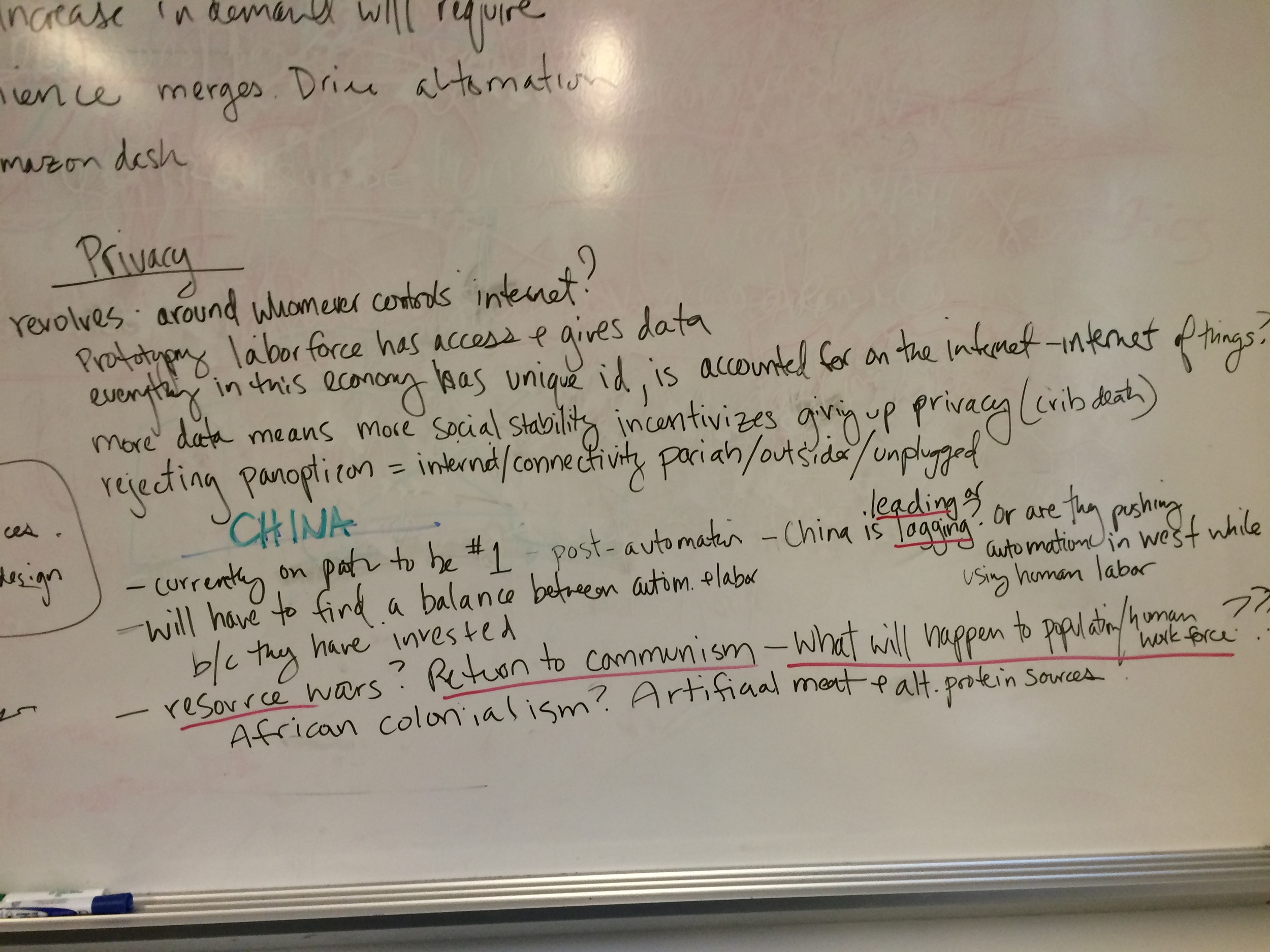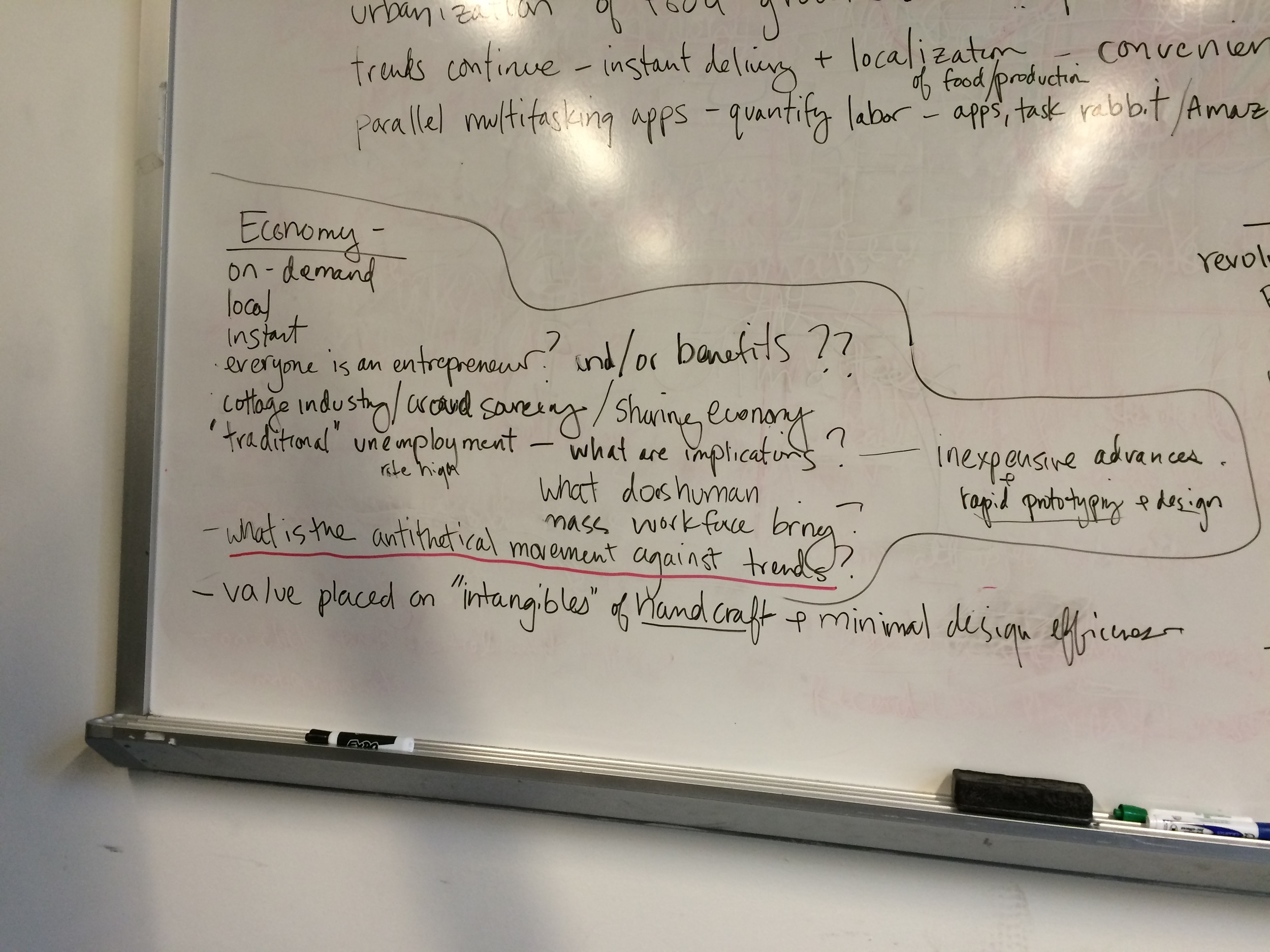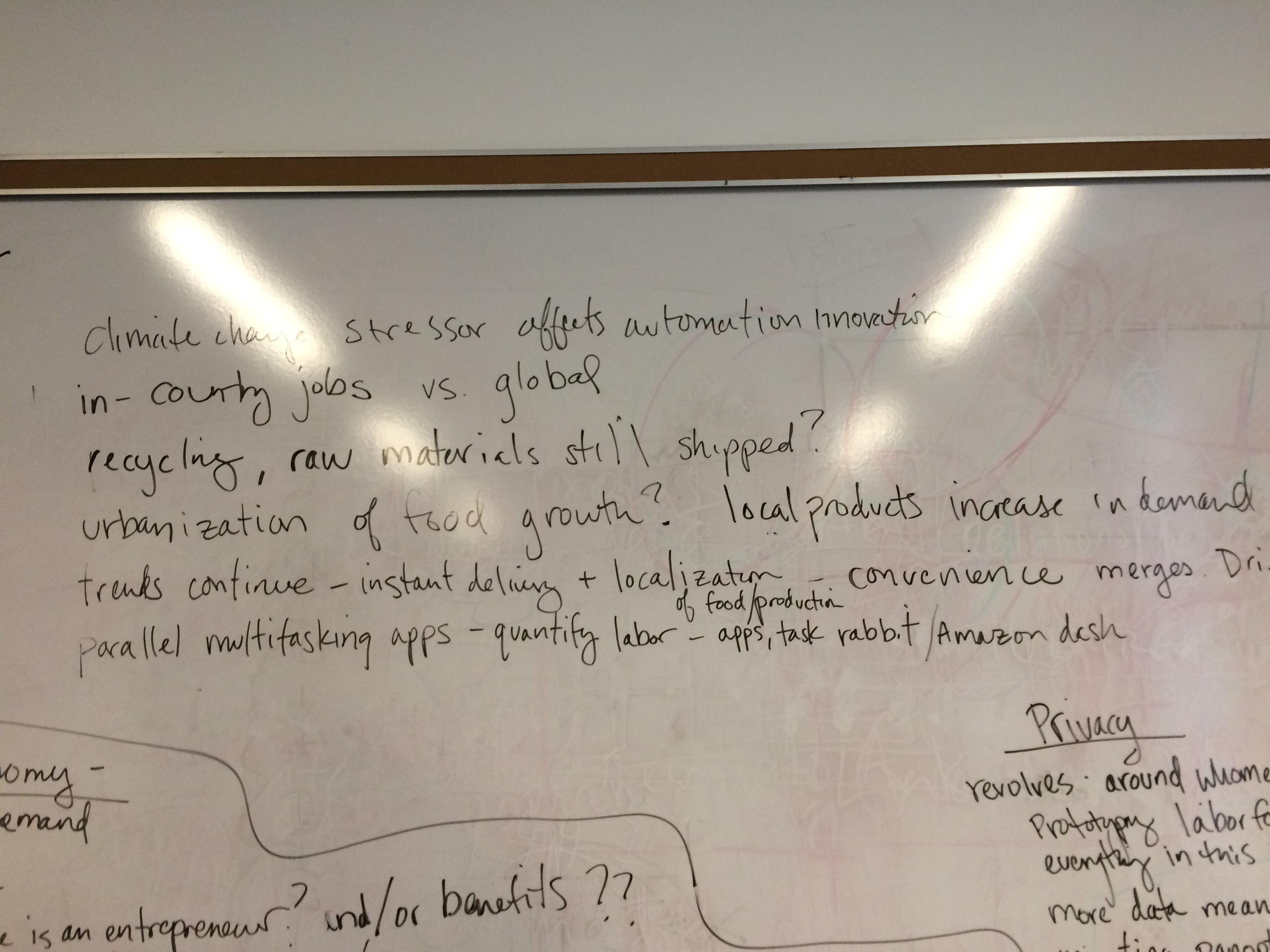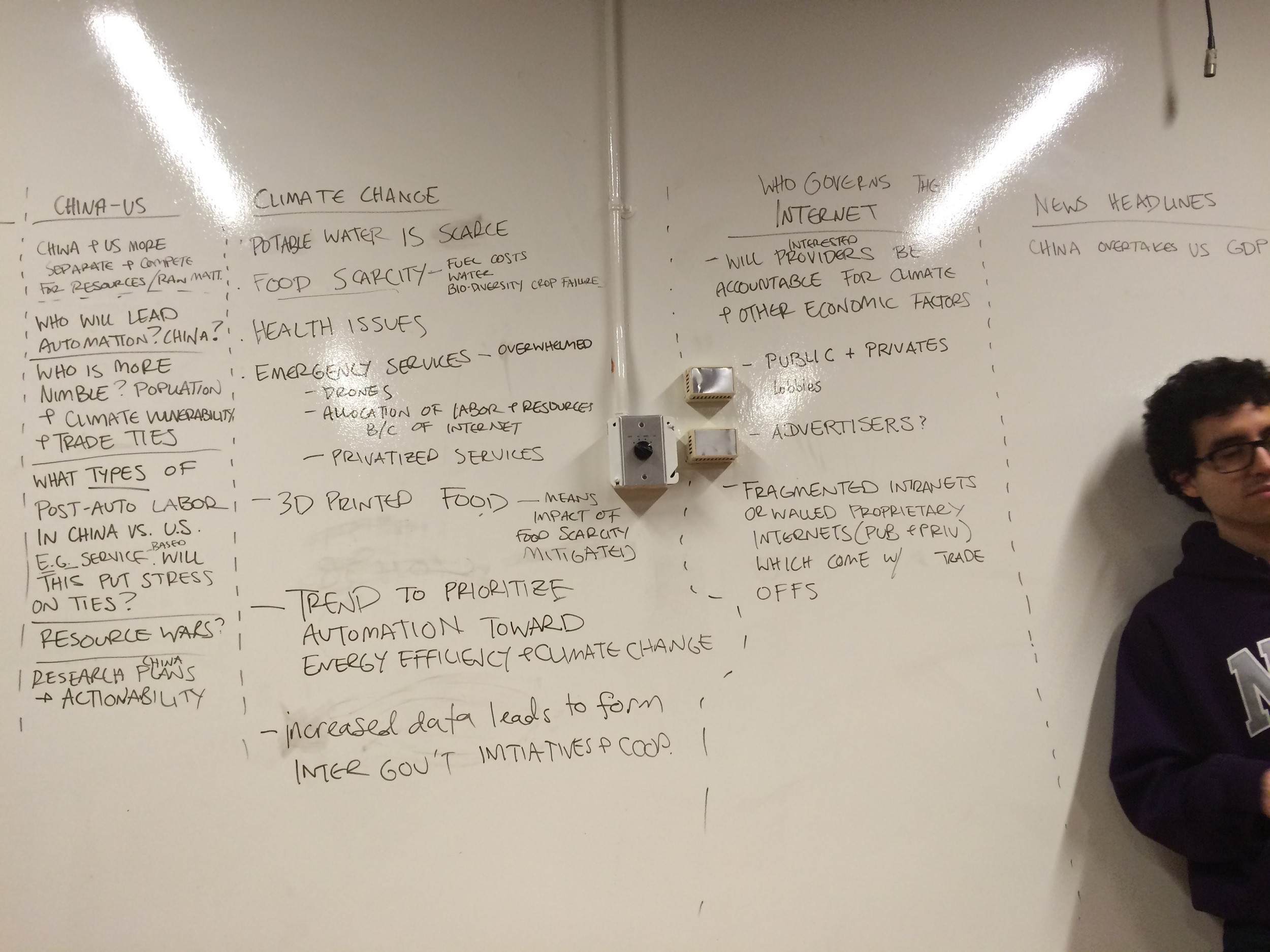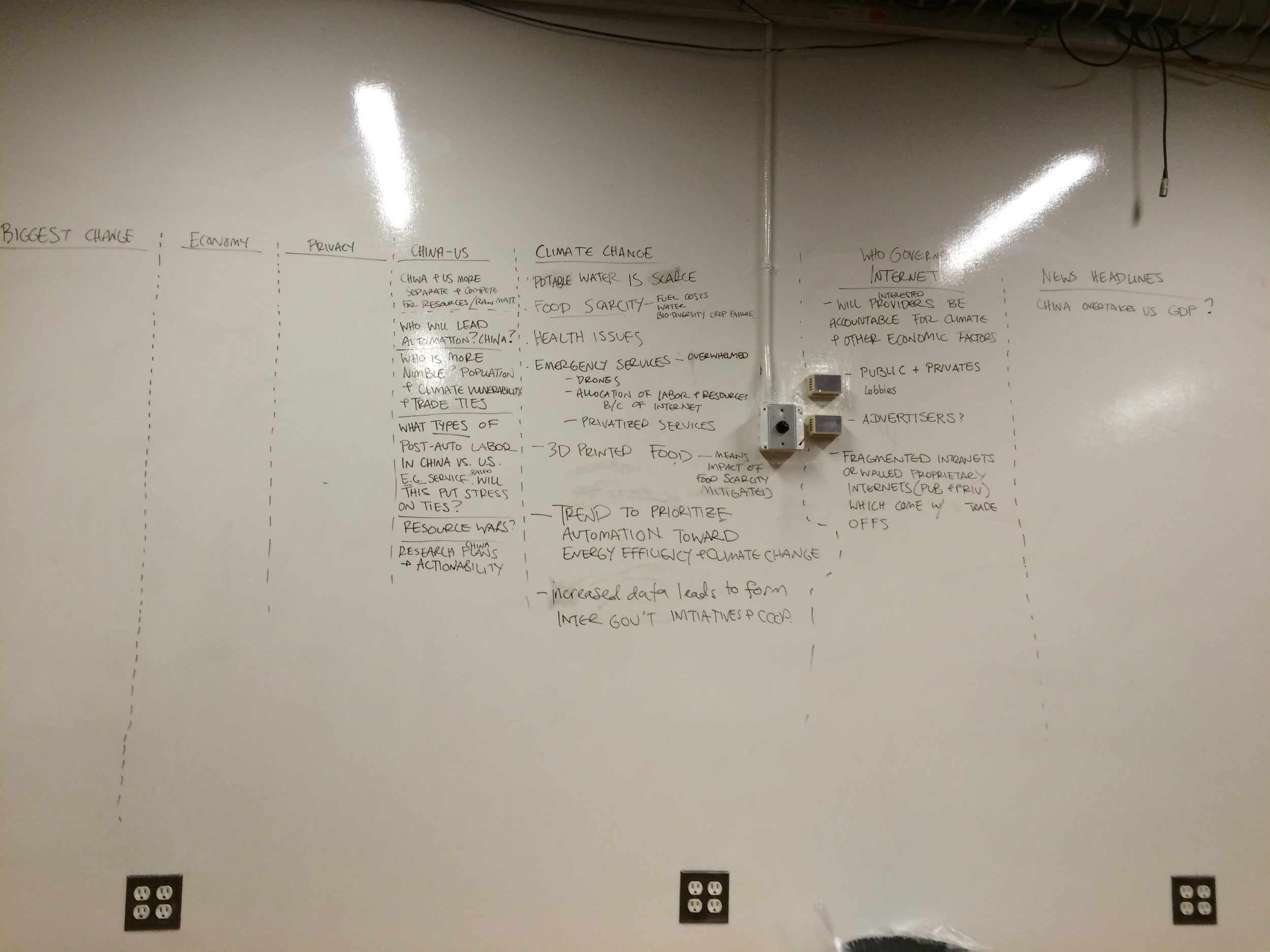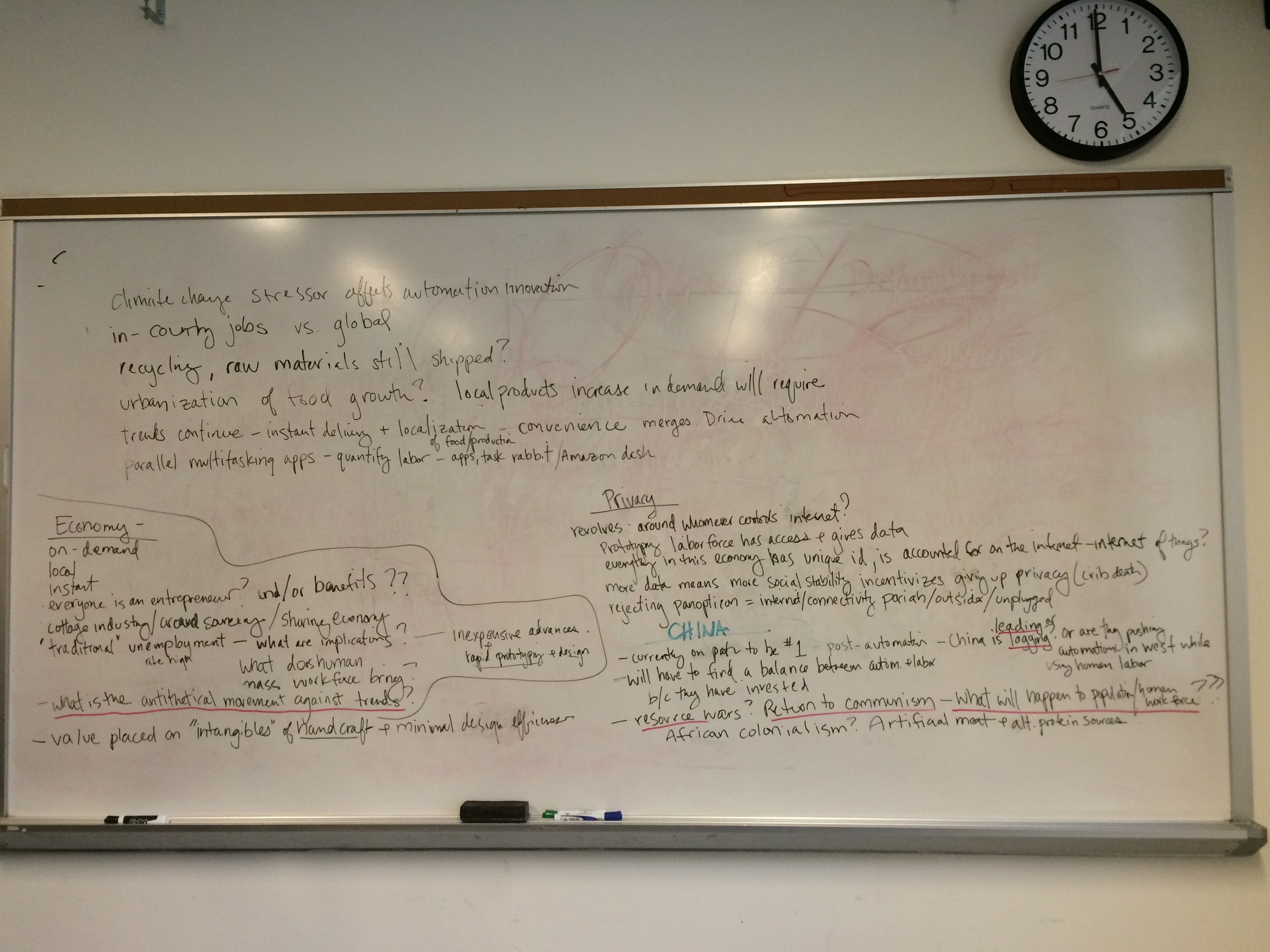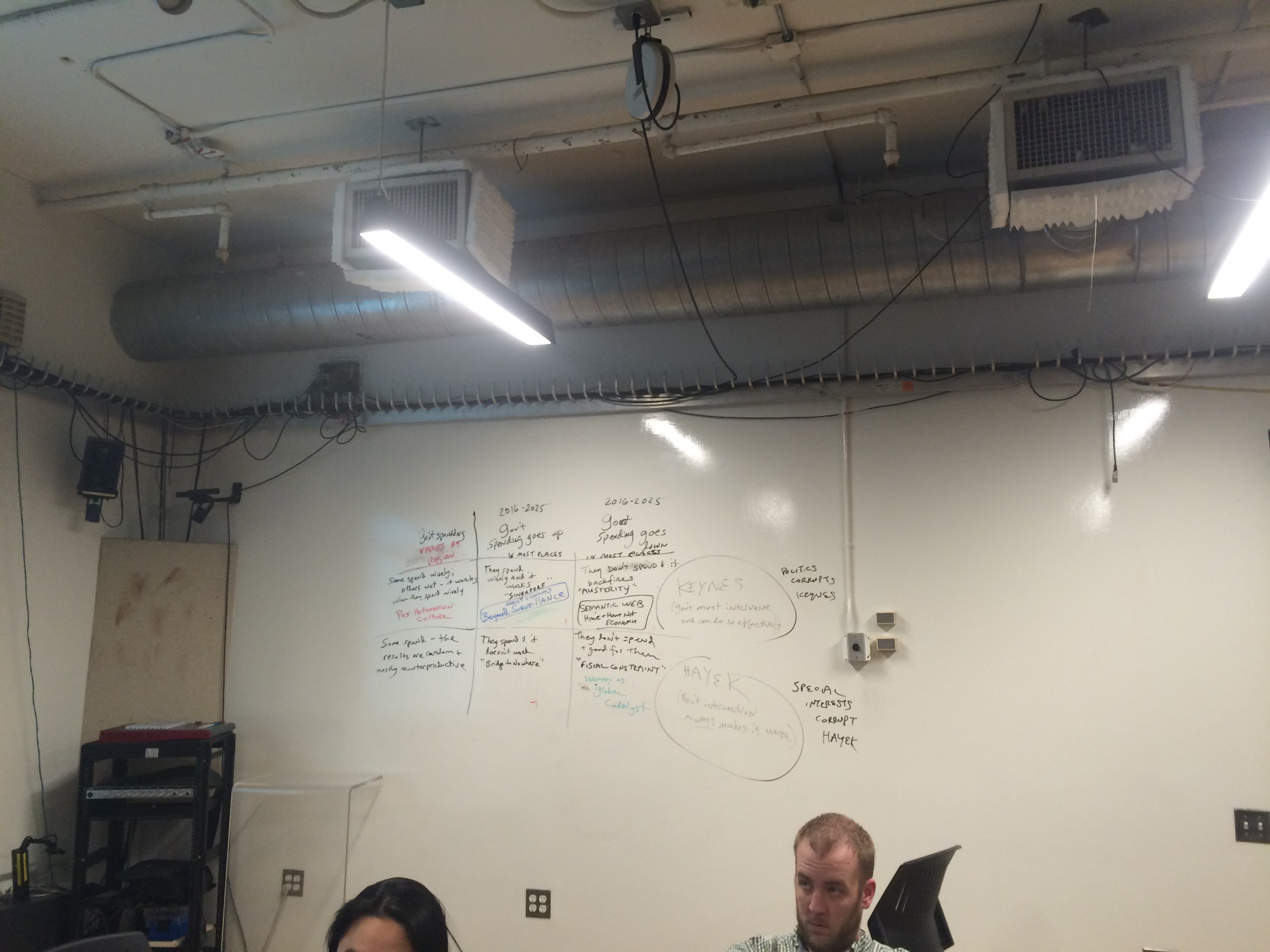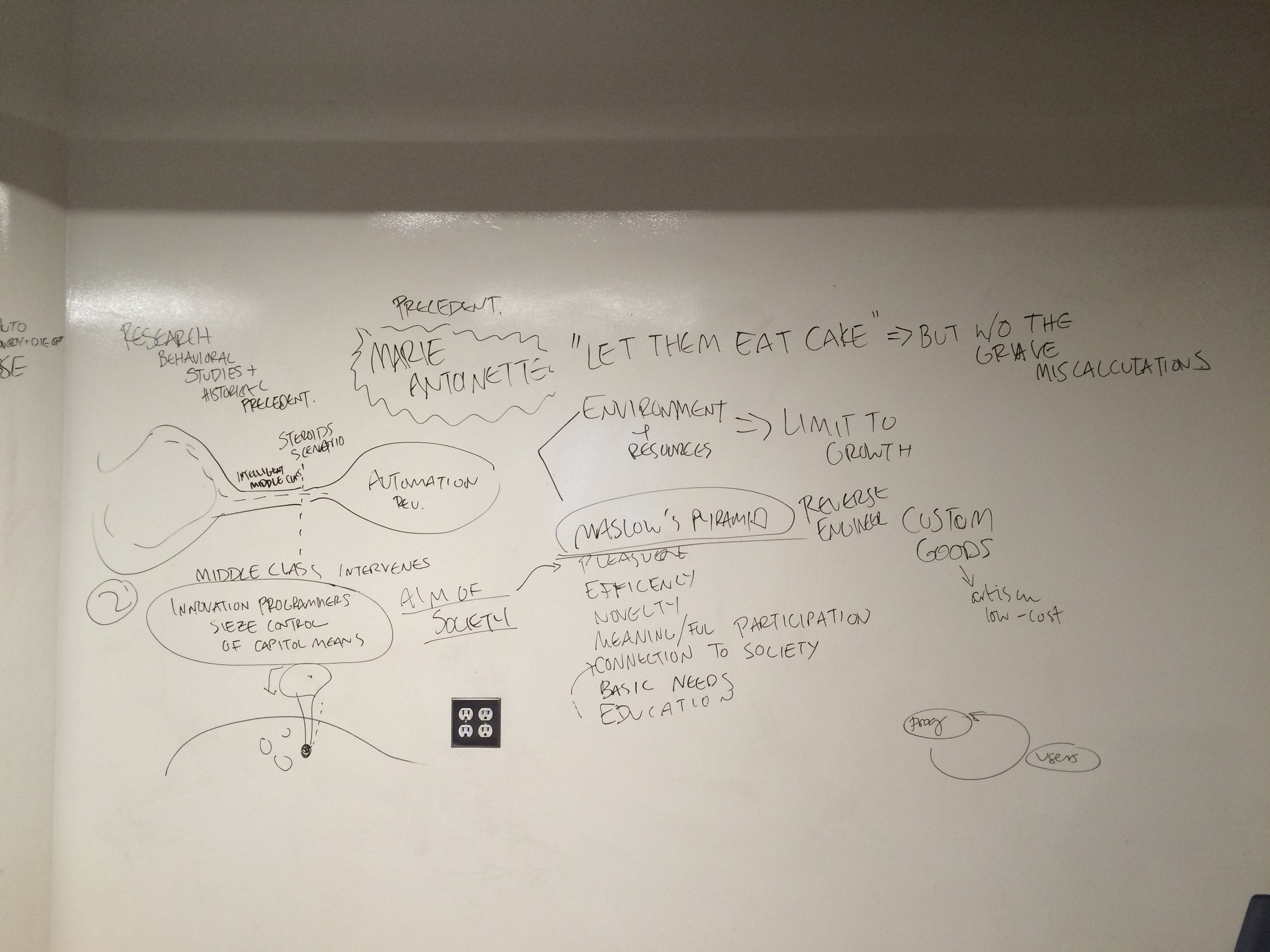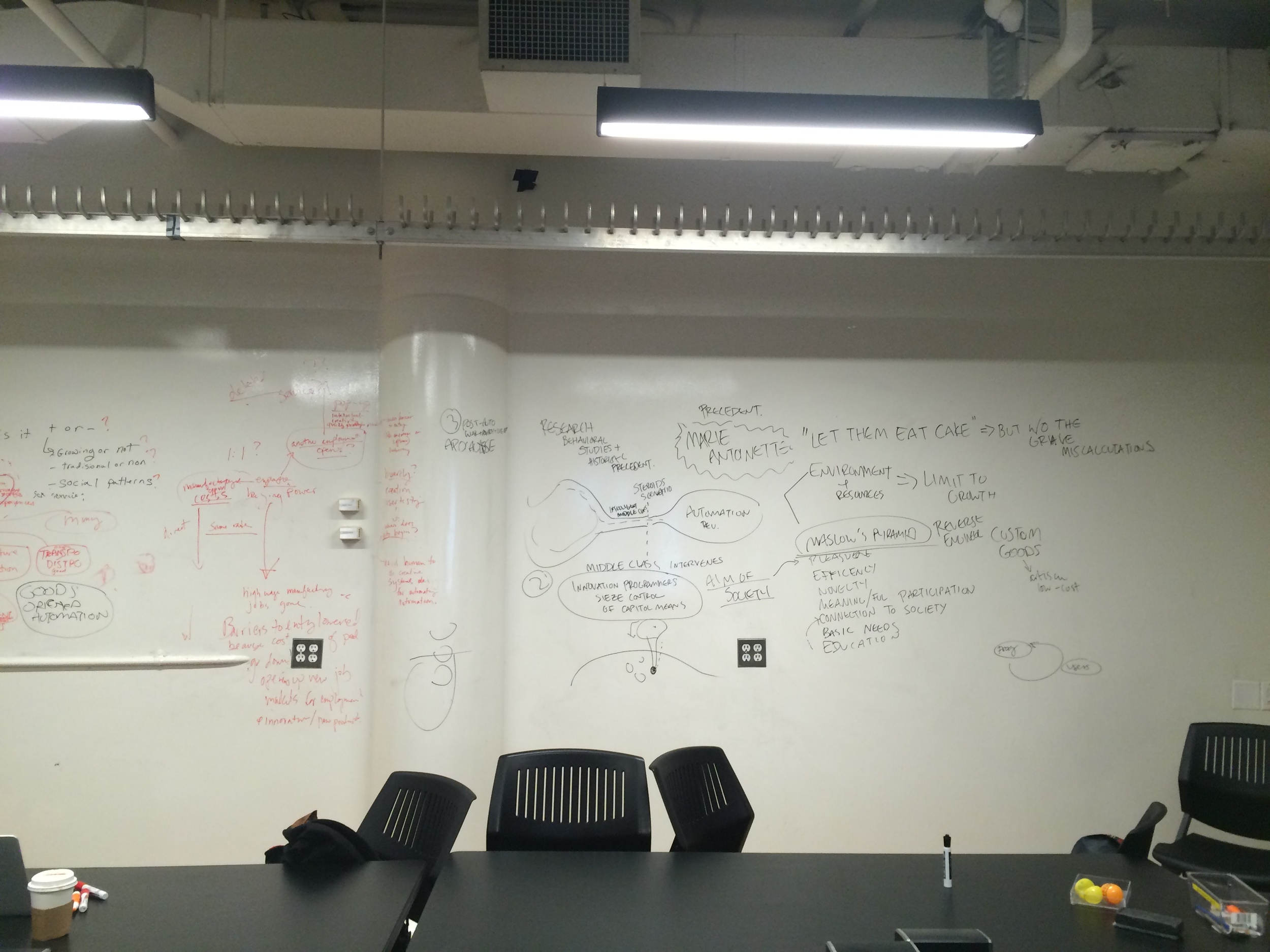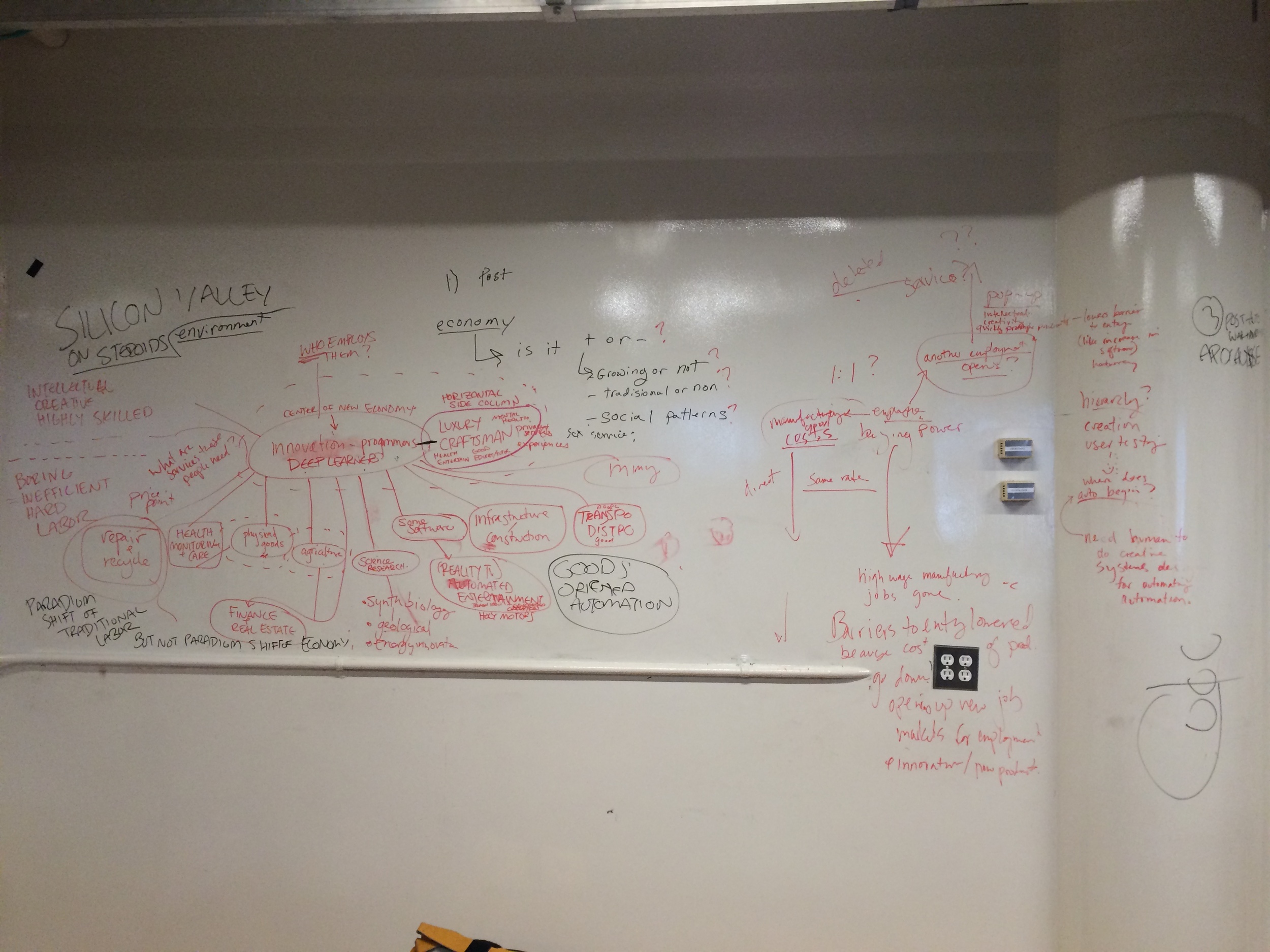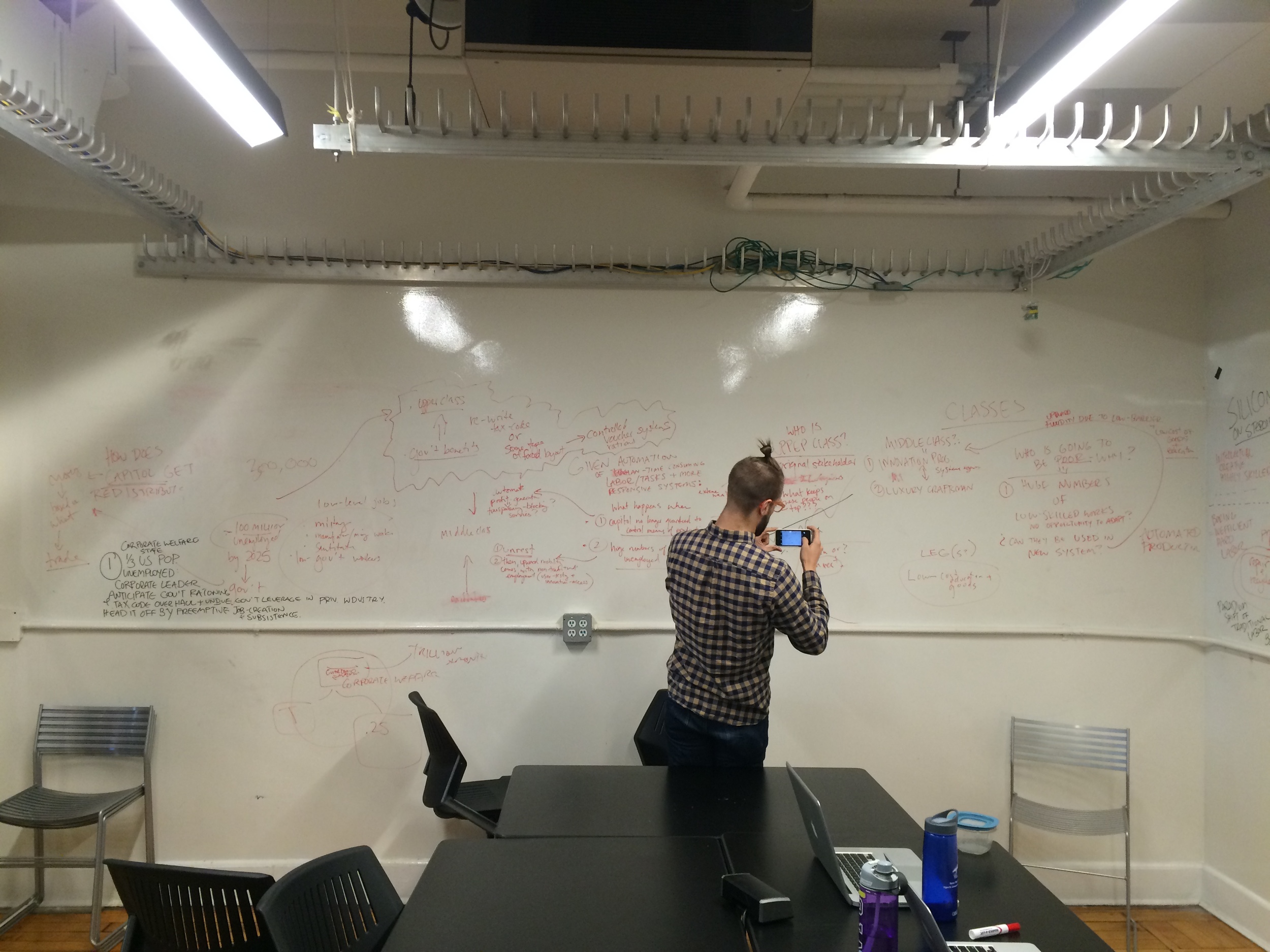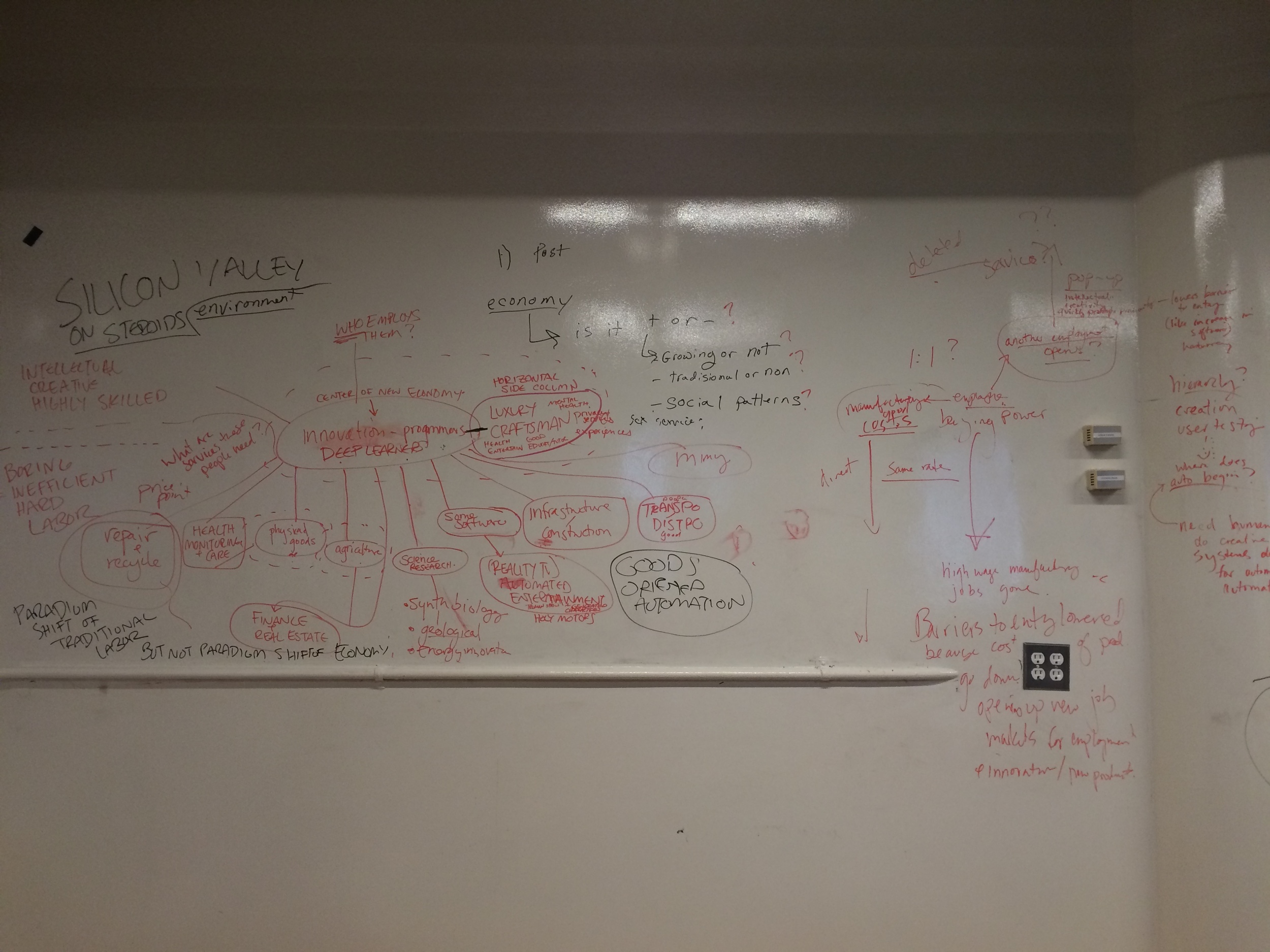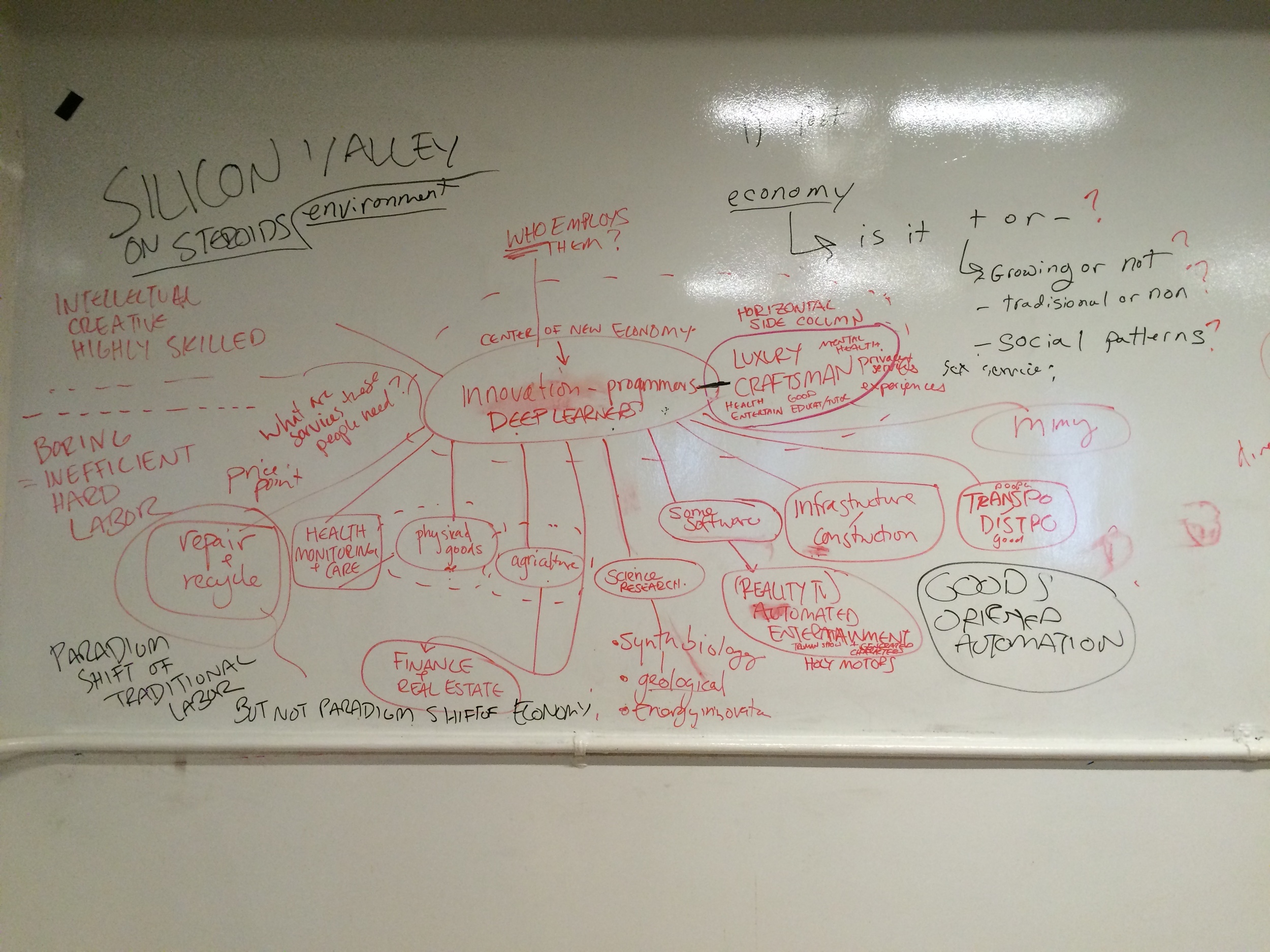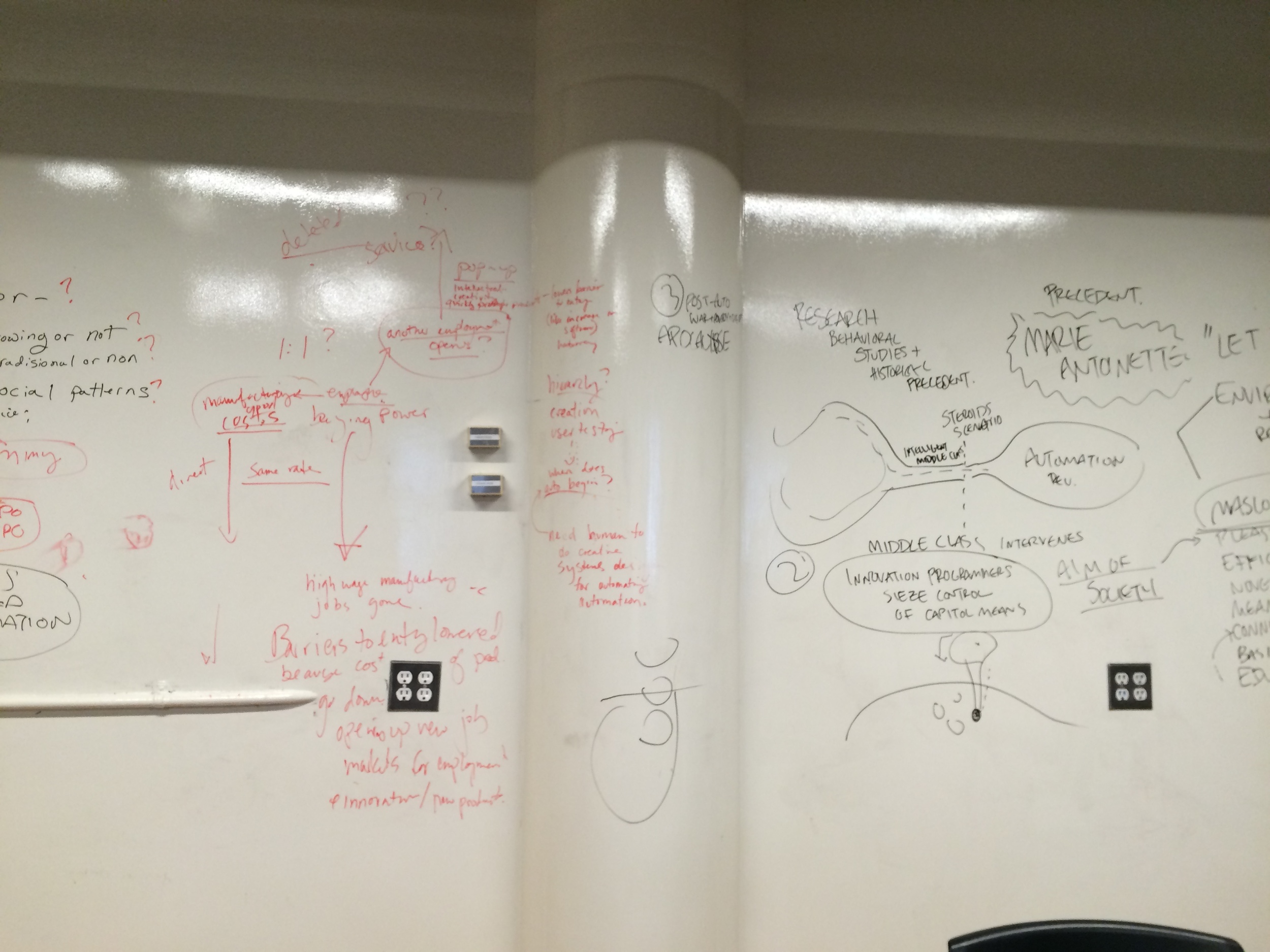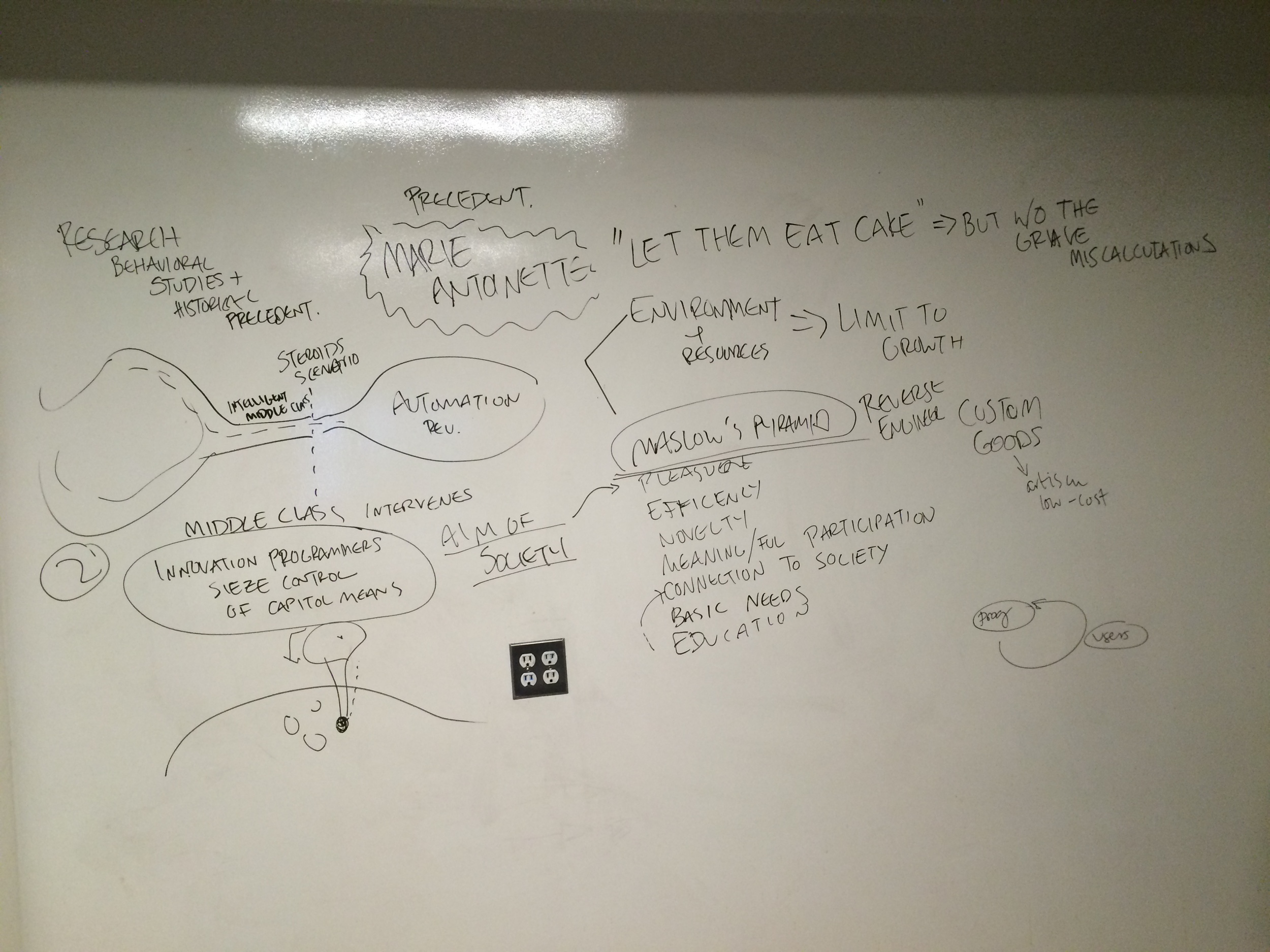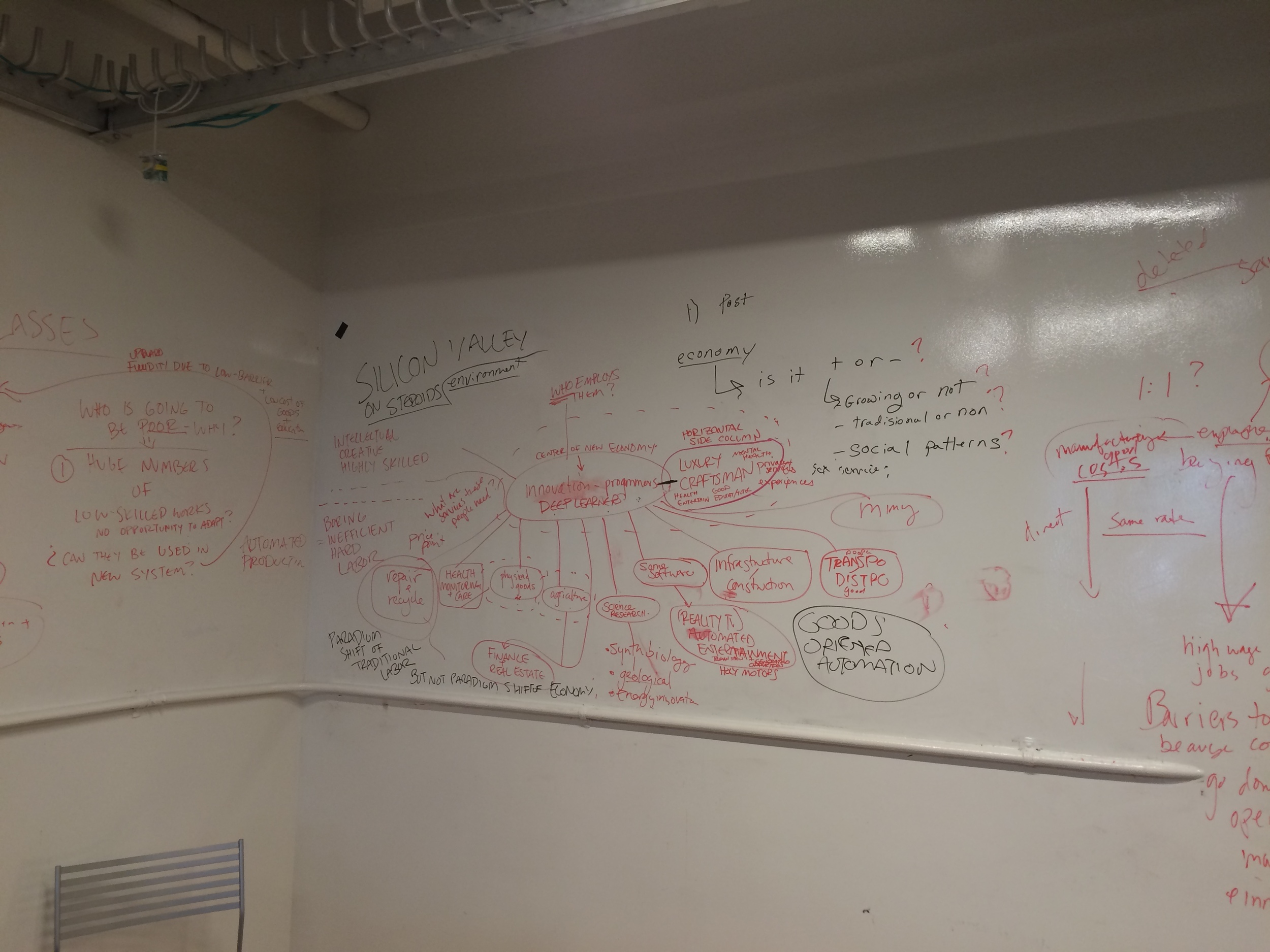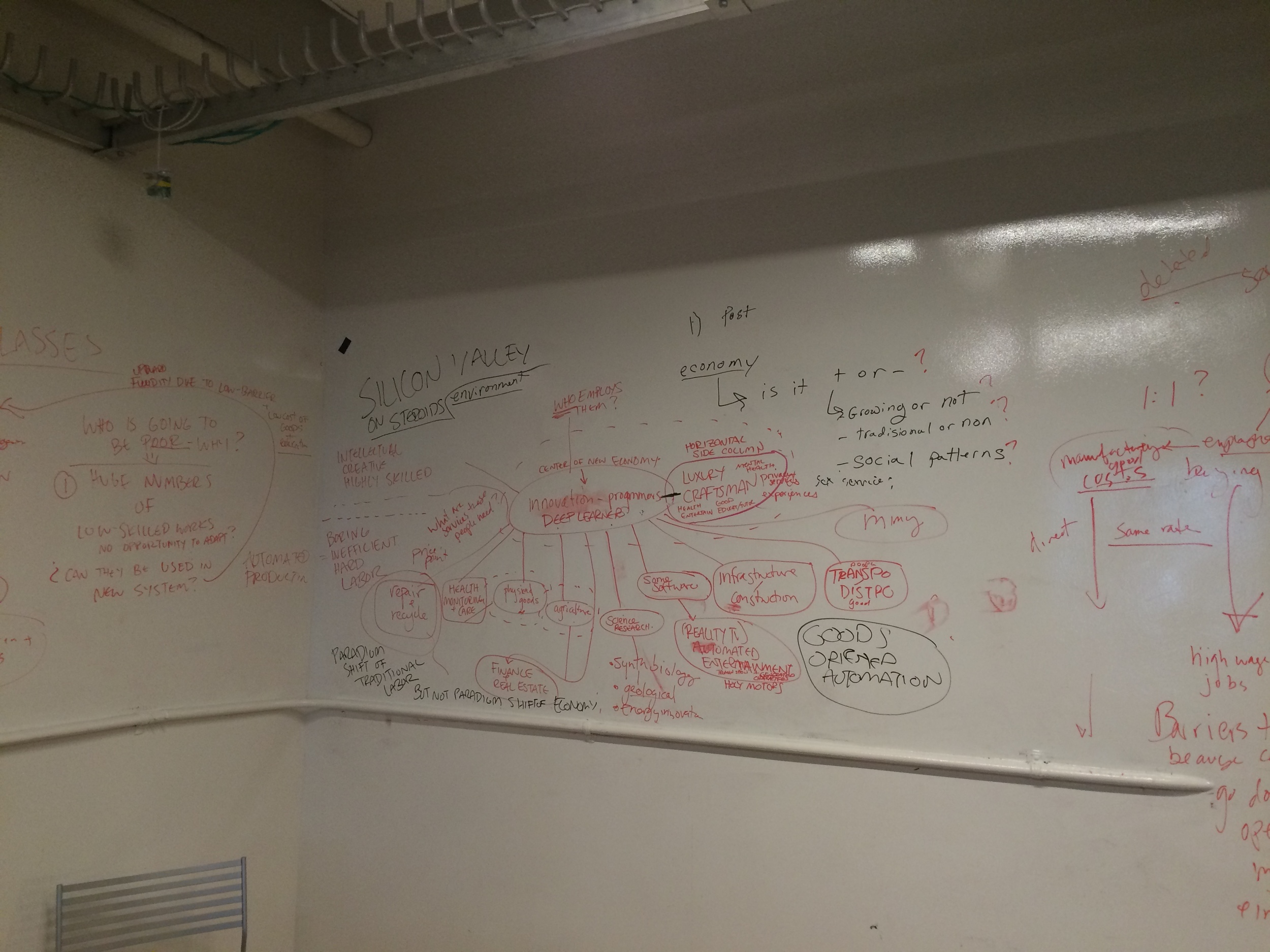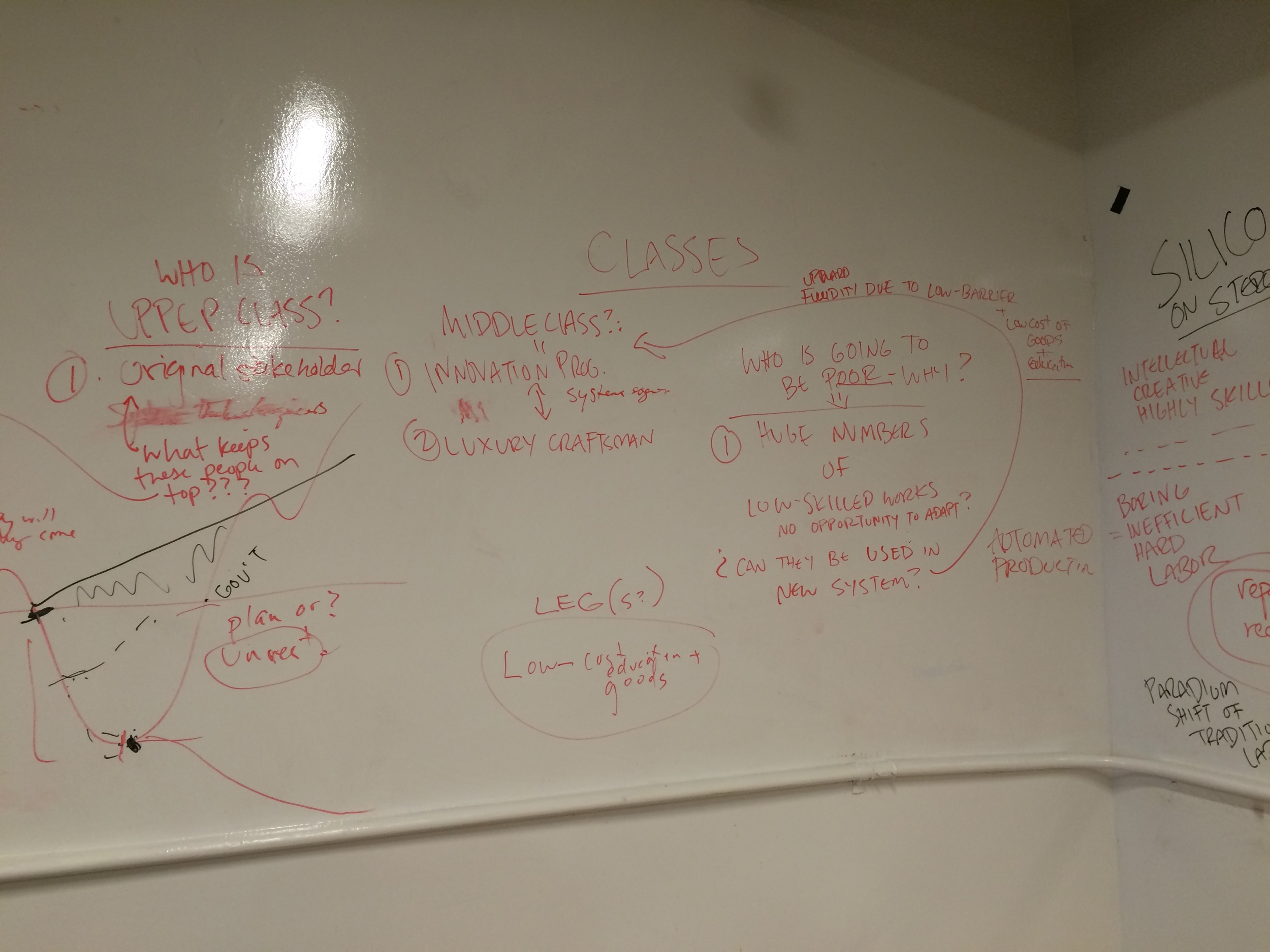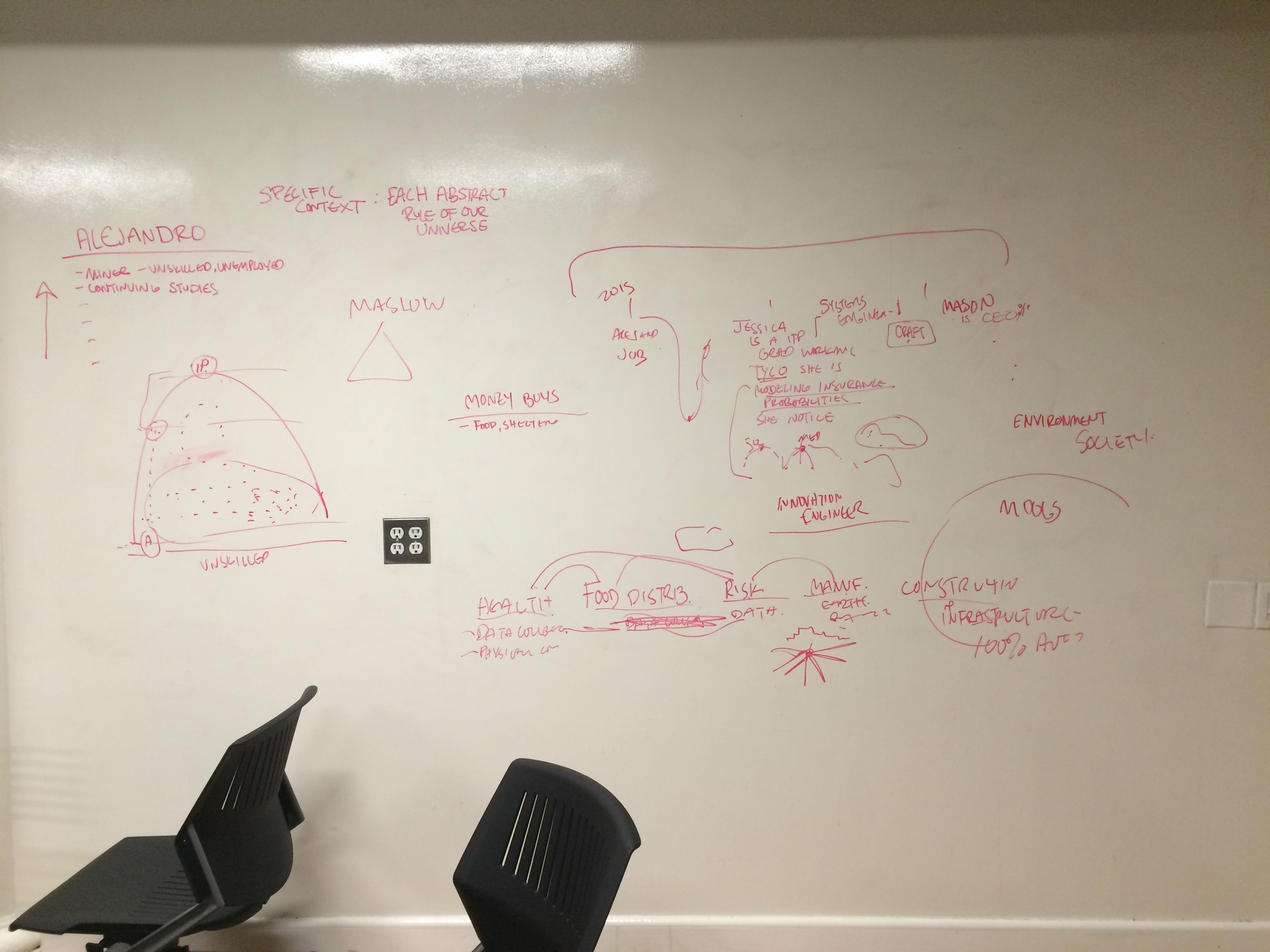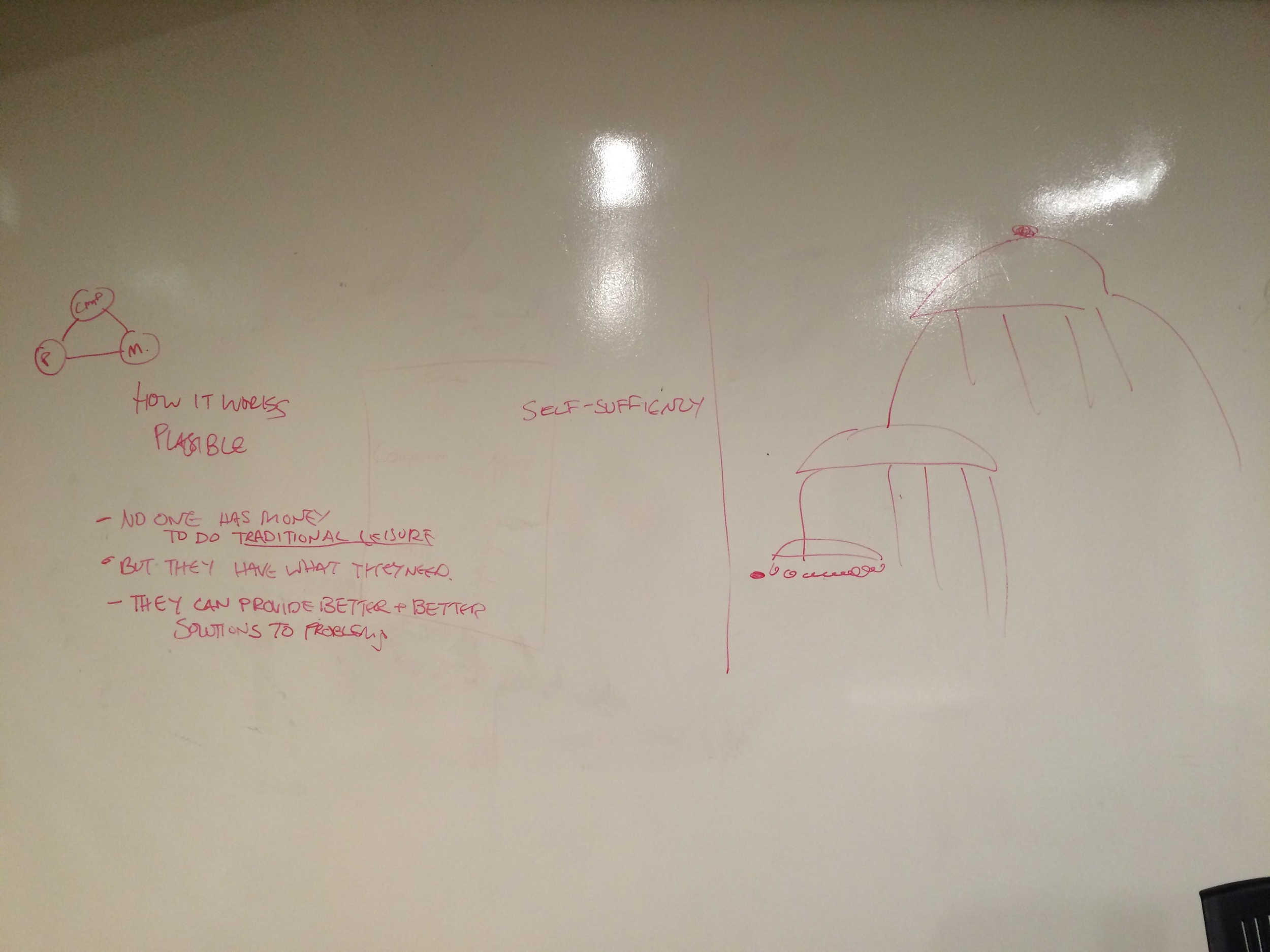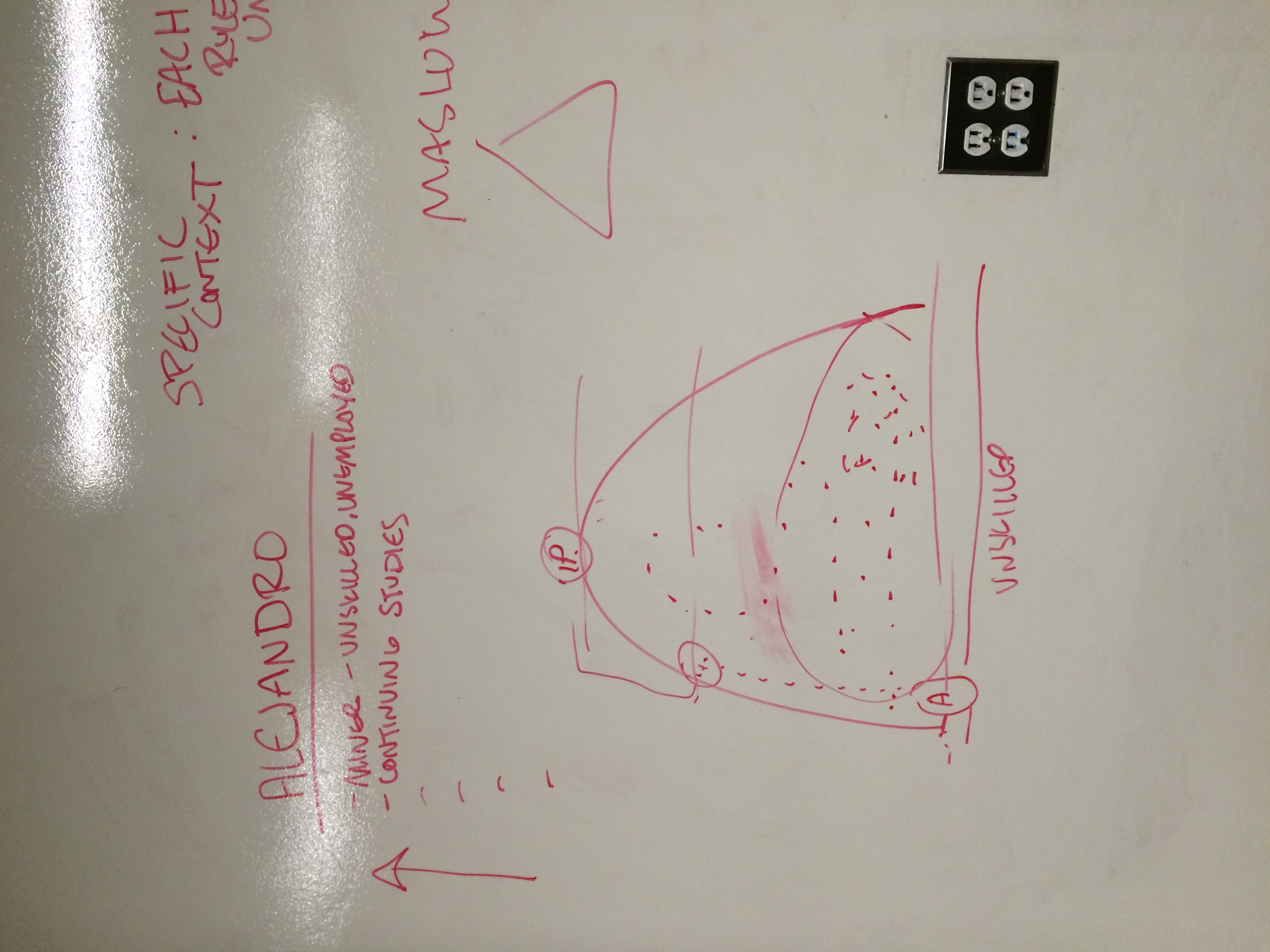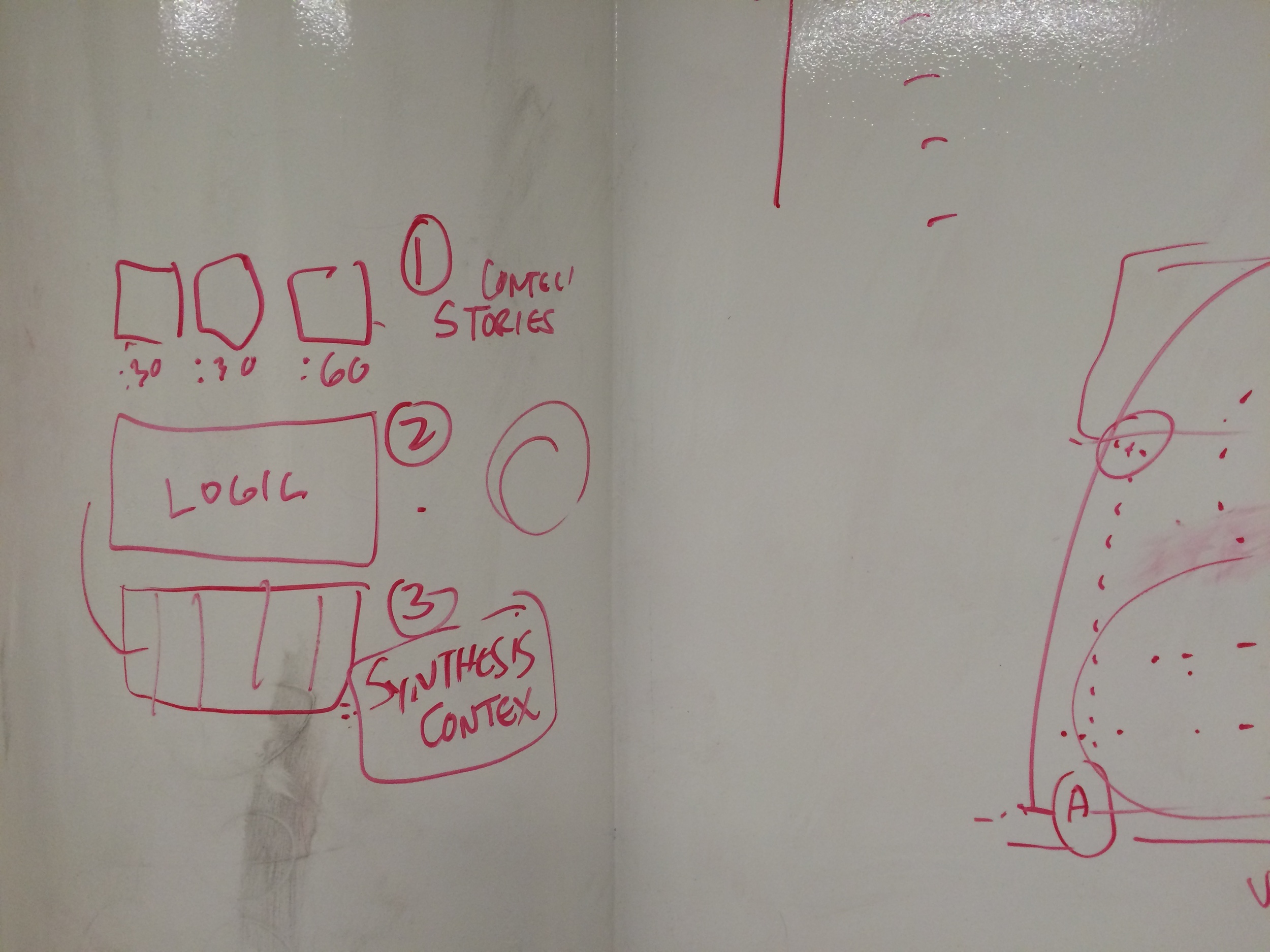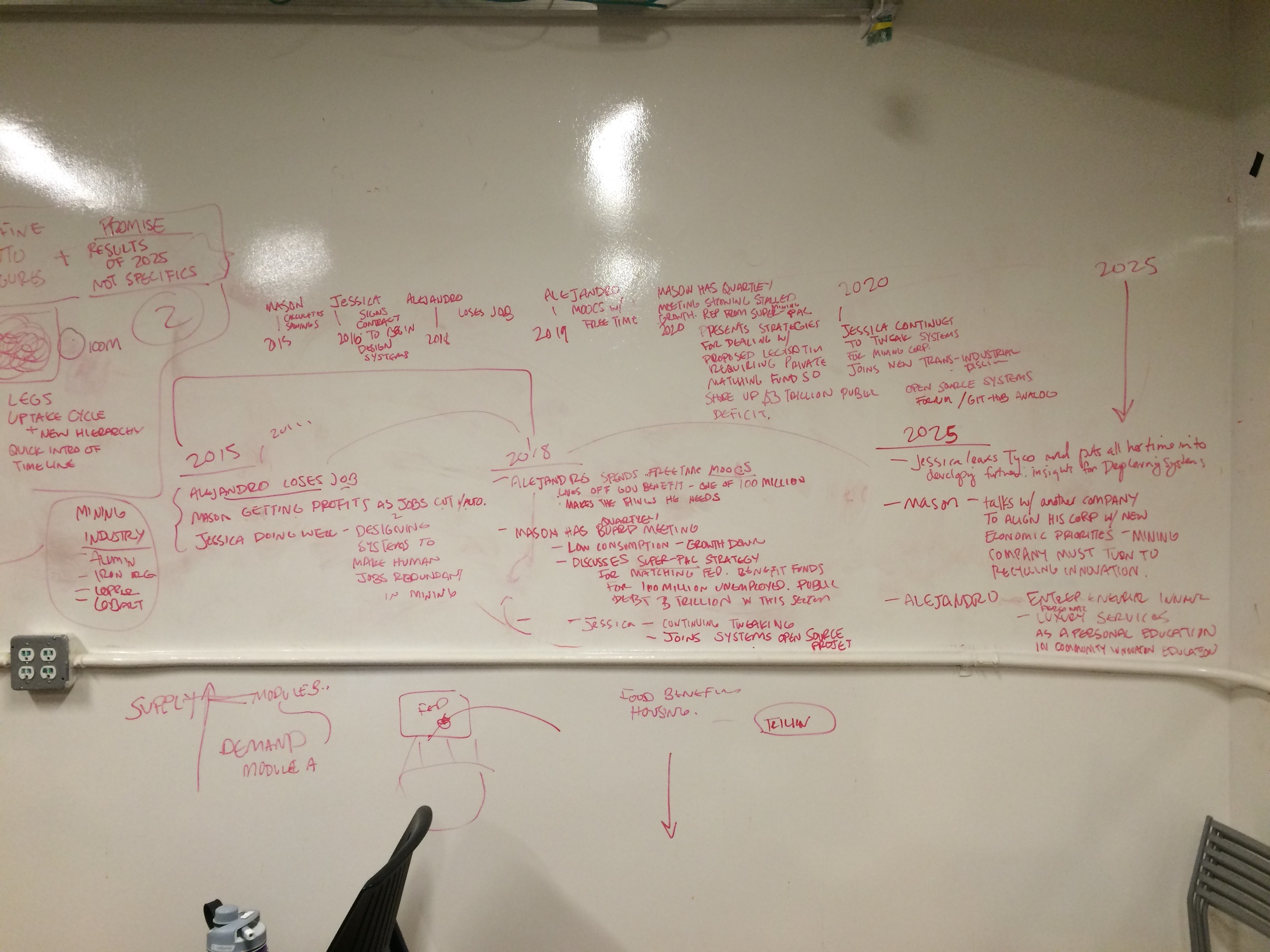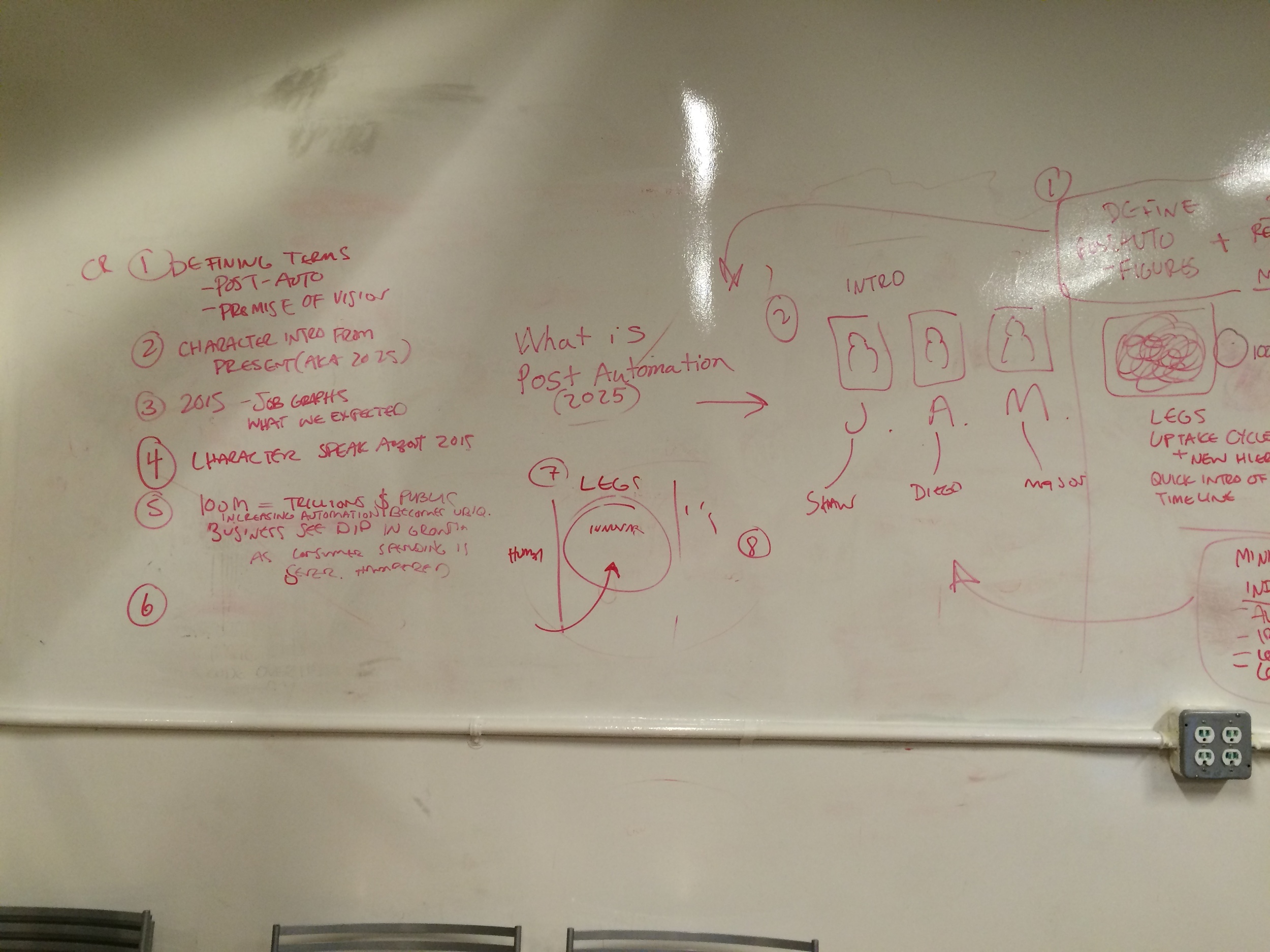Our working scrawlings across the hallowed whiteboards of ITP.
We received a brief mention in the New York Times City Room Blog. The rest of my team was Sam Sadtler, Diego Cruz, and Shaun Axani. It was standing room only!
Here is our deck.
QUICK JOTS FOR A BRIEF PRECIS:
Our core premise was that profit-seeking (we used mining industry) would make a push to ubiquitous automation
And at its peak 100 million are unemployed
The new class of systems engineers can see with hi-res data across industries that losses will be greater if a) the government swoops in with a voucher system b) damage to infrastructure, social fabric, consumer spending are allowed to go unfettered. It is determined losses would be greater than a public-private partnership for a basic wage.
So now three major classes coalesce: the systems engineers aka “innovation programmers” who use AI and Deep Learning Networks to rapidly adjust system architecture and data collection, and the Aggregate Networked Human Intelligence Taskers who basically exist to perform user testing and consume. Original shareholders see a gradual outflow of their agency to the systems engineers in shaping industry as economic priorities shift to resource optimization and infrastructure preservation. The Aggregate underclass is empowered to horizontal or upward mobility because of lowered barrier to entry as a result of ubiquitous automation’s low-cost education, goods, services.
And there is another class of personalized, craft, luxury goods and services which are things that are already automated but which there is demand for.
Hidden costs are slowly reduced due to automation.
Supply outstrips demand at first, until automation matures to engender new insights to innovation
A dream where capitalism partially suffocates its current incarnation by being it’s true incarnation.
We used mining as our example industry to tell the story in concrete terms, and as a potential firestarter. it’s the most ripe industry for it in some ways. The idea of 100 million was just - 30% of the population, a ballpark to base our scenario on— that number is for all jobs in the US which can be replaced through automation - across industries.. Means a trillion a month in subsistence assistance. It was an interesting feeling in the moment, having this momentary authority to talk about radical economics in front of a (standing-room) roomful of people ushered in by institutions the likes of PwC, NYU, and NYT. But in a way that uses profit as the conduit for change. Our rule was that we wouldn’t use altruism— it was about comparative costs.
Someone approached us to interview us for a book, and another asked to get in touch to do a podcast. Another woman thanked us, and mentioned that it was interesting to hear about such a scenario in terms of specific working classes.

